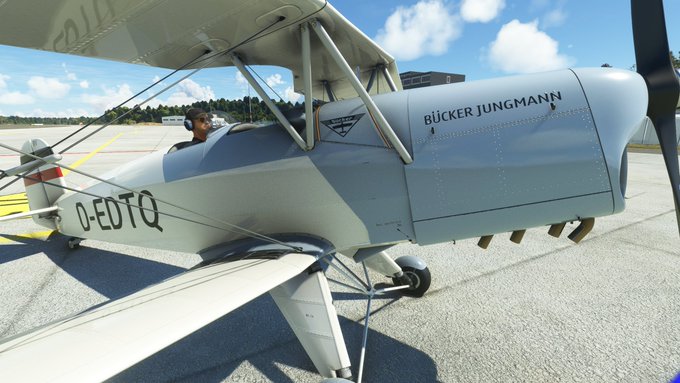December 13, 2022
Today in Microsoft Flight Simulator, I’m going to fly an important World War II airplane you probably never heard of: the Bücker Bü 131 Jungmann, which served as the primary trainer for the German Luftwaffe.
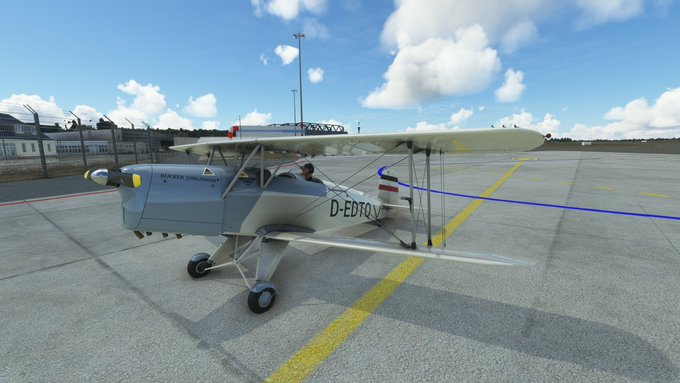
I’m going to fly it from the airport at Braunschweig (Brunswick), which was very close to where German pilots secretly trained in the Jungmann and other aircraft to rebuild the German air force.
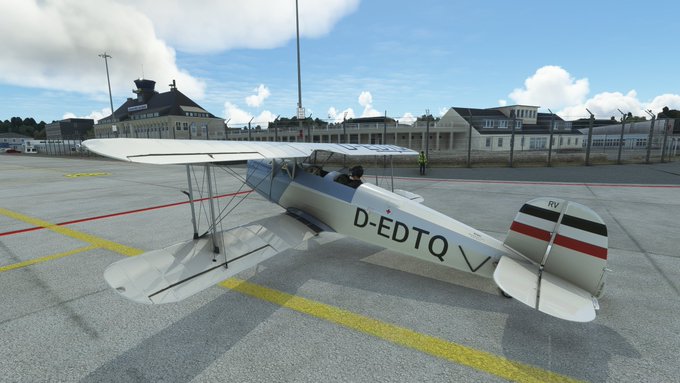
The story begins with Carl Clemens Bücker, who served in German naval aviation during World War I, and moved to Sweden after the war to manufacture airplanes (since this was banned in Germany under the Versailles Treaty).
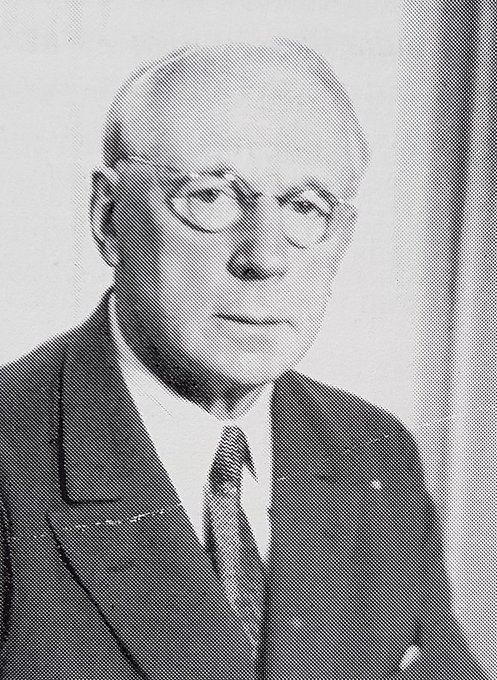
Bücker returned to Germany in 1932, and set up his own company outside Berlin, making him a late arrival on the German aviation scene. Their first offering was the Bü 131, which would be one of the last biplanes produced in Germany.
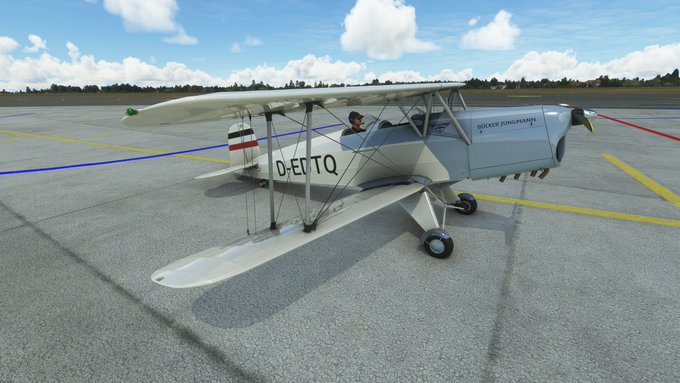
The fuselage was made from steel tubing covered in fabric, and the wings from fabric-covered wood – not unlike contemporary trainers like the Piper Cub.
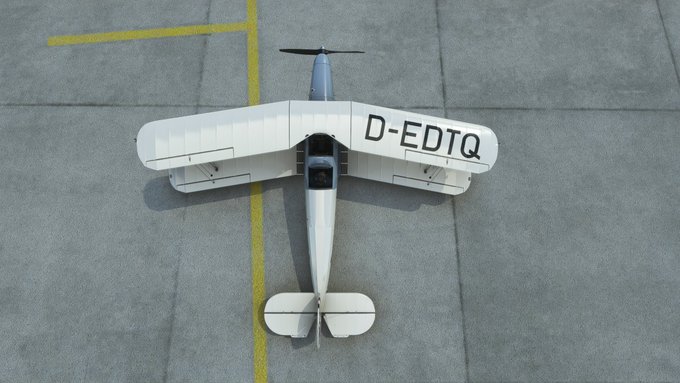
The first A version had an 80hp 4-cylinder air-cooled inline engine, but the B version (here) was upgraded to 105hp to meet the standards for military training.
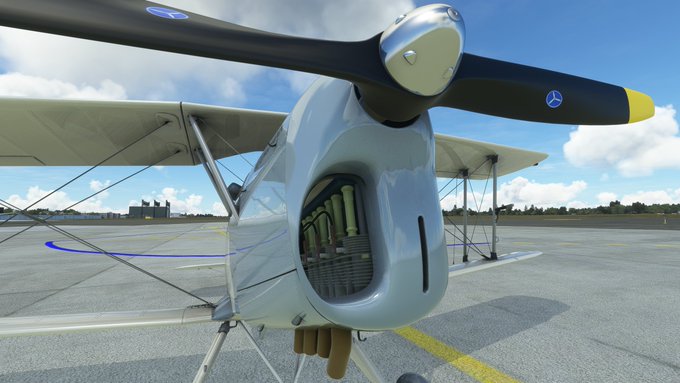
As a trainer, the Bü 131 had two seats in tandem. The student sat forward, and the instructor to the rear. A solo pilot would sit in the rear seat – again, like the Piper Cub.
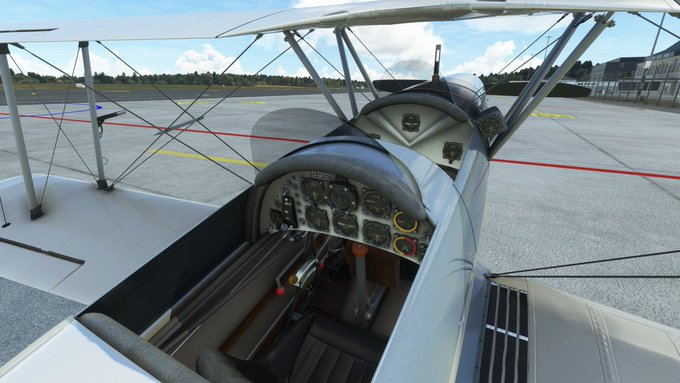
Sitting in the front seat, the student had a limited instrument panel consisting only of an airspeed indicator (left), turn coordinator (center), altimeter (right), and tachometer (attached outside to the right). This was to avoid confusing the student with too much information.
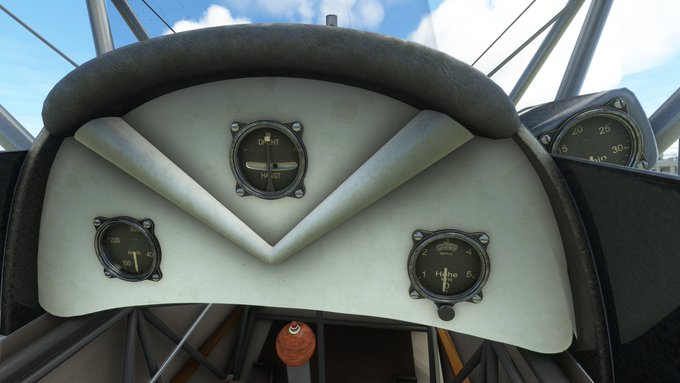
In the rear seat, the instructor or solo pilot had a more complete array of instruments, including a compass (upper center) and vertical speed indicator (upper right), as well as the magnetos (lever to the left) for turning the engine on and off.
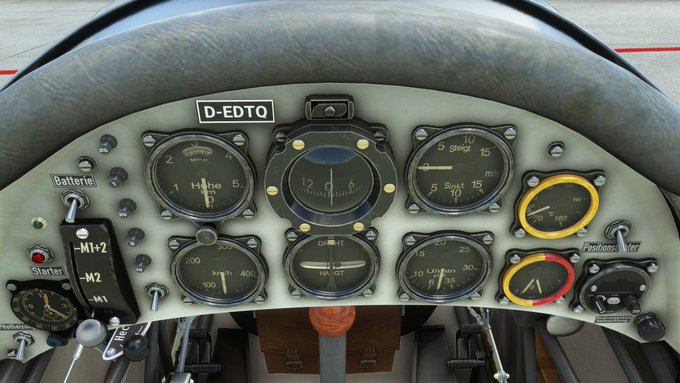
The instructor also had controls for the fuel supply (left red knob), throttle and fuel mixture (smaller knobs to the left), and elevator trim (right knob), along with a priming pump (far right) for starting the engine.
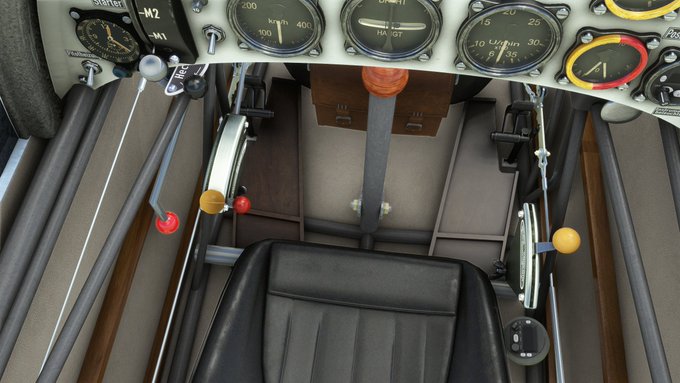
Someone just asked me how much fuel we have. Well, you see that column straight in front, which looks like a gunsight? That’s actually the fuel gauge, and it’s showing half full for a relatively short flight.
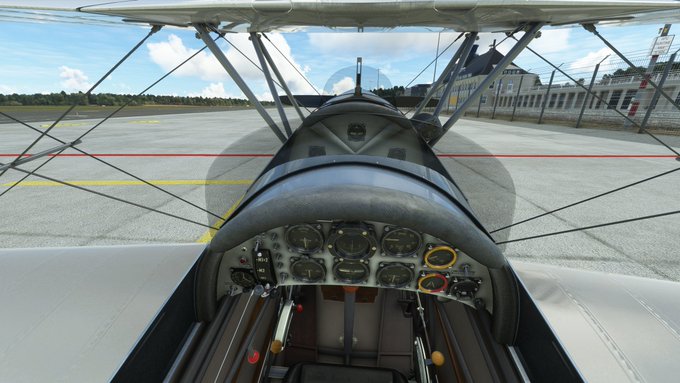
In 1933, the first Jungmanns were sold to the Deutscher Luftsportverband (DLV), the “German Air Sports Association”. Supposedly a recreational association, this organization was set up by the Nazi Party to train new pilots, before it formally repudiated the Versailles Treaty.
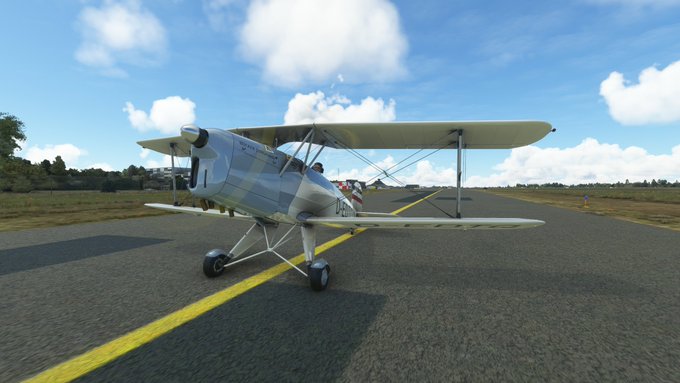
The DLV, headed by Hermann Göring and Ernst Röhm, established a number of flying schools across Germany. Later, in 1937, these schools were folded into the new Luftwaffe, or German air force.
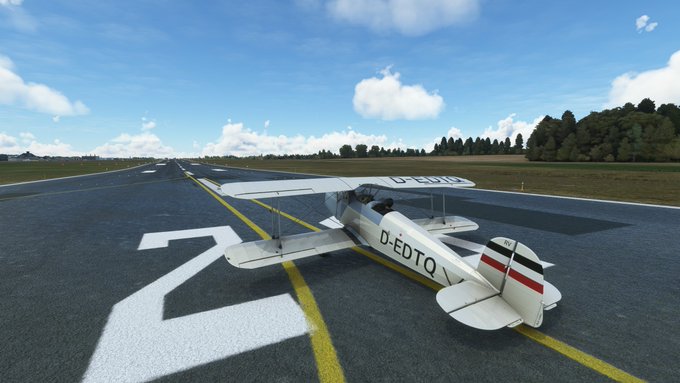
It sure didn’t take much to get the Bü 131 off the ground. Also, not much torque given its relatively small engine, so not too difficult to keep it straight on the runway.
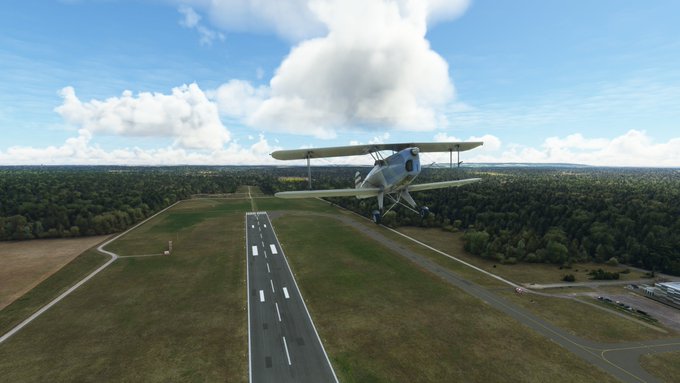
Going into and during World War II, new German air force pilots go their very first flight training at a so-called A/B Schule. There were several scattered across Germany, and many of these grass airstrips no longer exist today.
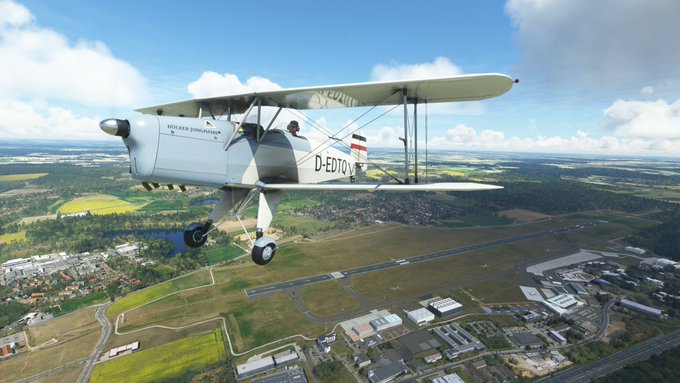
That’s why I’ve come here, to Braunchsweig, where one of the oldest and most important training fields was located. It too no longer exists, and I’m not sure if it formally hosted an A/B Schule, but it was the heart of the German pilot training program.
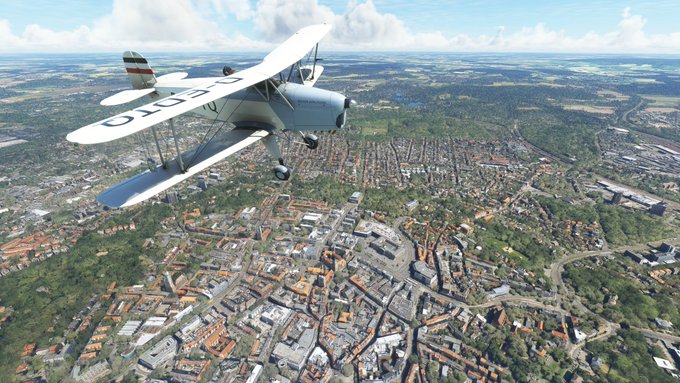
Braunsweig-Broitzem Airfield was located just to the southwest of town. The base facilities, which still exist and have been repurposes, are circled in red, while the former location of the open field for takeoff and landing is circled in yellow.
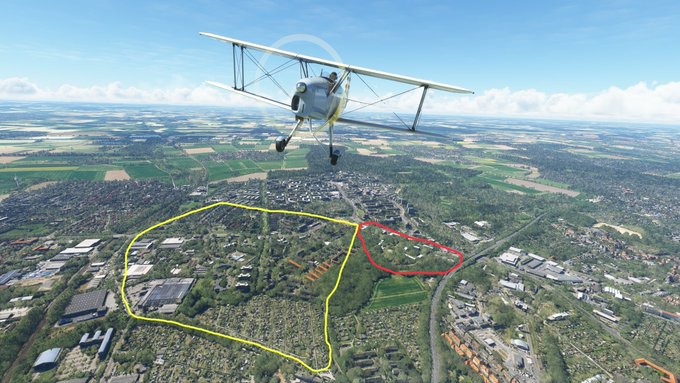
Opened in 1916 as a military airfield, in 1928 Braunsweig-Broitzem became the location of the Deutsche Verkehrsfliegerschule (DVS), the German Air Transport Pilot School, the main center for training airline pilots for Lufthansa – but actually a secret military training program.
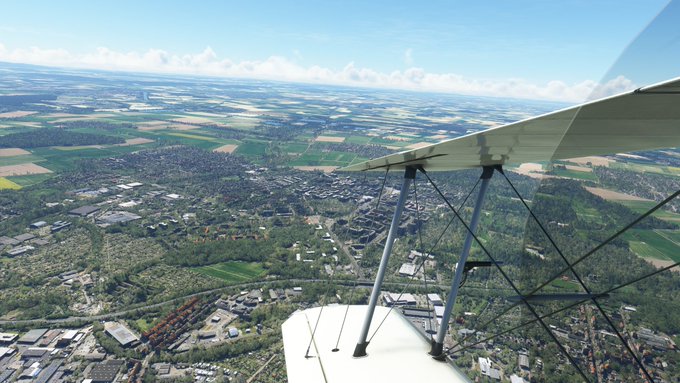
After Germany’s defeat in World War II, the Allies tore down most of the airfield and turned it over to residential and agricultural use. However, apparently one of the old hangars now serves as a liquor store.
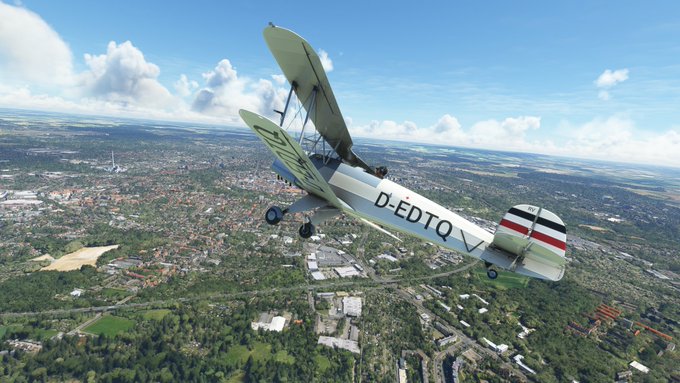
Early on, Bücker’s new company had a hard time gaining traction with the German military. But the Bü 131 soon found a thriving export market, with thousands of trainers being sold or manufacturing licensed out to Switzerland, Yugoslavia, Hungary, Spain, and even Japan.
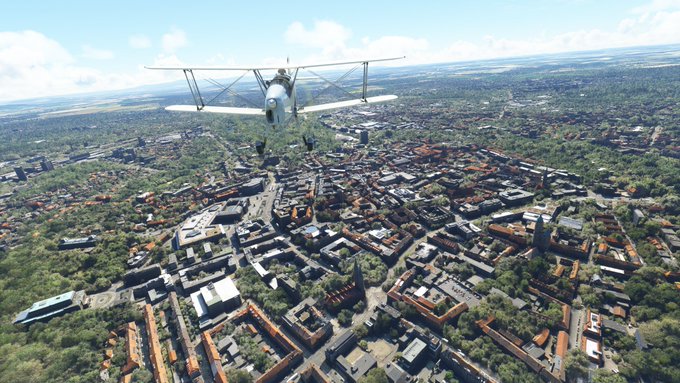
The Jungmann continues to be prized today as a nimble aerobatics plane, and continues to perform in airshows.
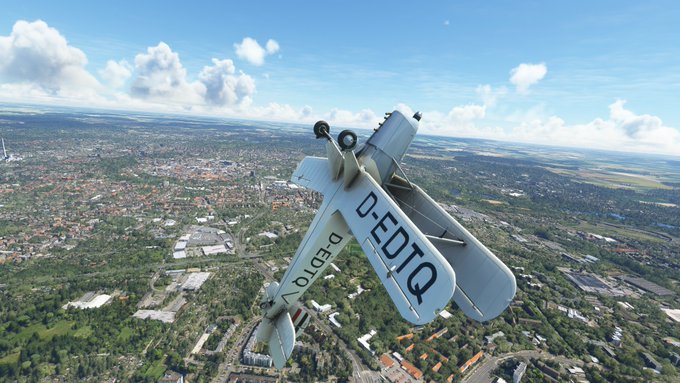
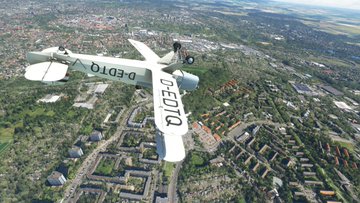
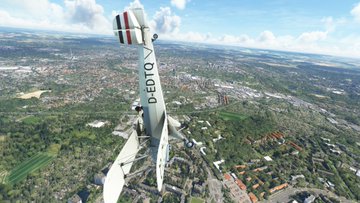
umerous Japanese pilots in World War II learned to fly in the Bü 131, and Spain’s air force actually retained it as its primary trainer until 1968.
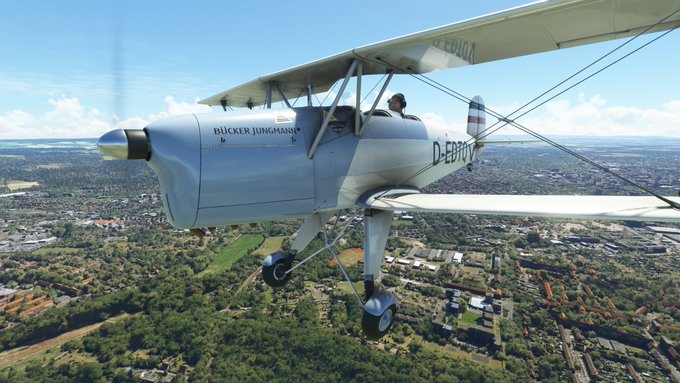
Eventually the Bü 131 caught on back home and became the Luftwaffe’s primary trainer during World War II. Before they ever climbed into a Messerschmidt or Focke-Wolfe, many German pilots learned to fly in a Jungmann.
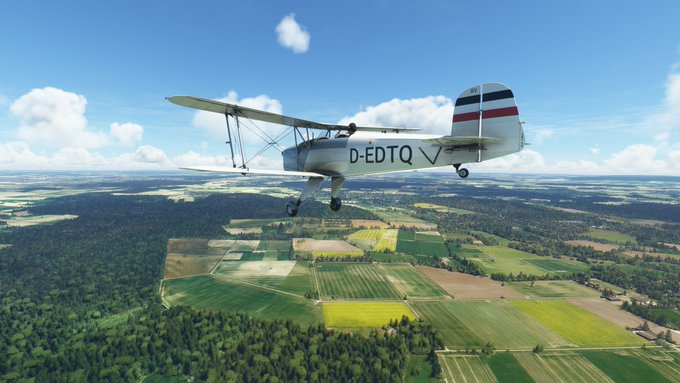
During the war, the Bü 131 was eventually phased out and replaced by newer aircraft in its training role. What to do with all the old airplanes? Send them to the Eastern Front!
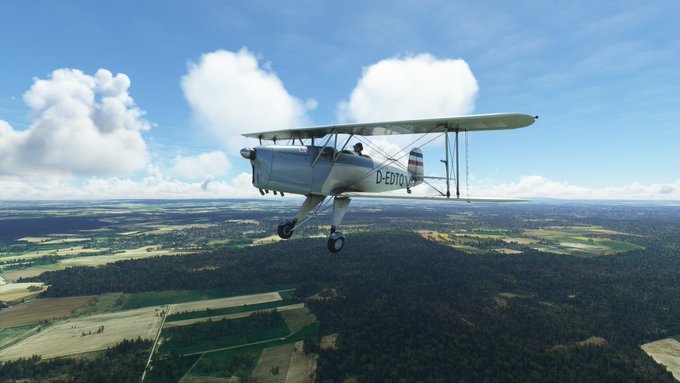
On the Eastern Front, the Bü 131 served mainly as a liaison aircraft, and also had a limited combat role serving in special “night harassment” squadrons, flown by Estonian and Latvian pilots.
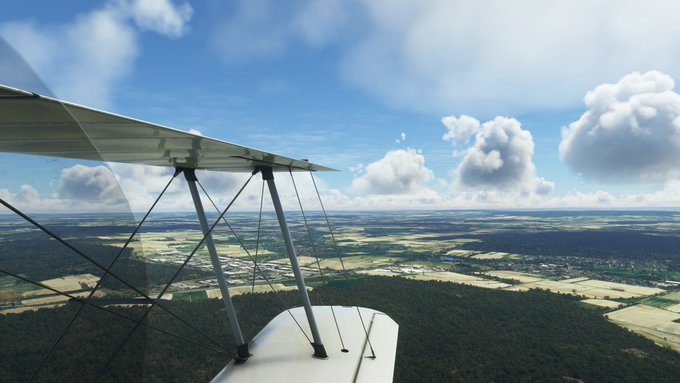
One of the towns close to Braunschweig is Wolfsburg, home to Volkswagen, so I’ve taken a brief detour here to fly over the huge auto factory there.
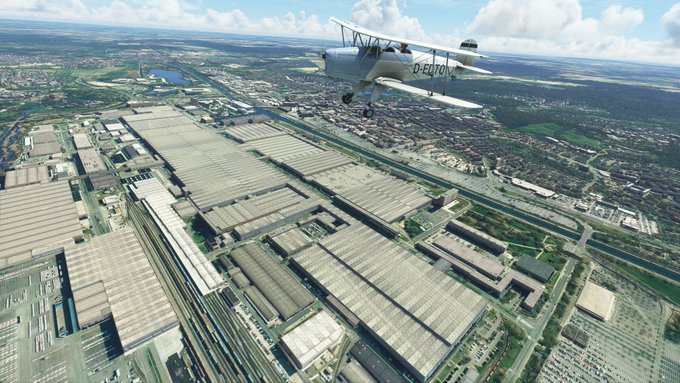
Time to turn back southwest from Wolfsburg and land back at Braunschweig-Wolfsburg Airport, which was also built in the 1930s and is currently home to the German Federal Aviation Office.
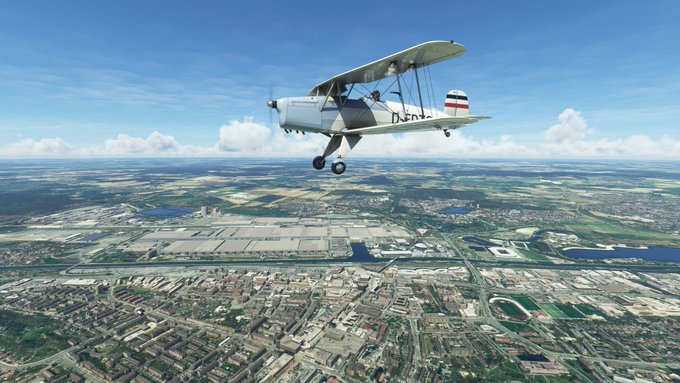
There’s no manual that I could find, so I had to figure out the stall speed by taking it up and slowing it down until it stalled, then recovering. It seems to stall at about 80 km/h, or about 43 knots.
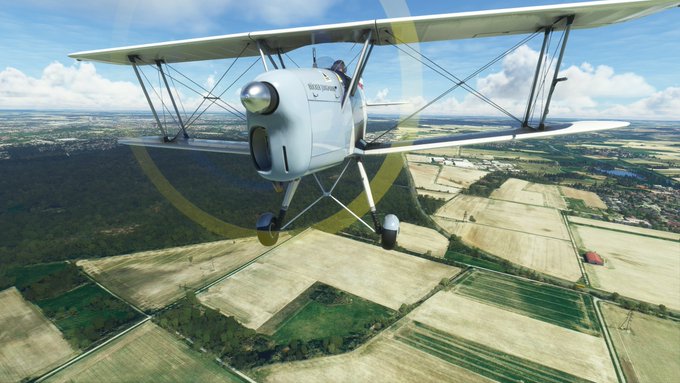
With that in mind, I’ll approach to land at about 100 km/h and see what happens.
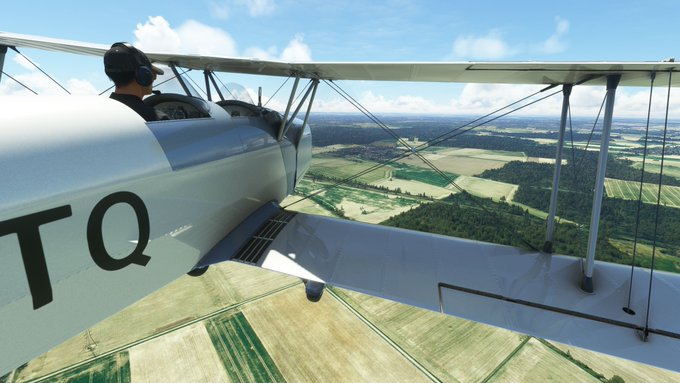
The altimeter is actually in km, so I’m just judging my altitude by sight. Turns out 1 km is about 3,300 feet, so 0.3 km is about right at 1,000 feet.
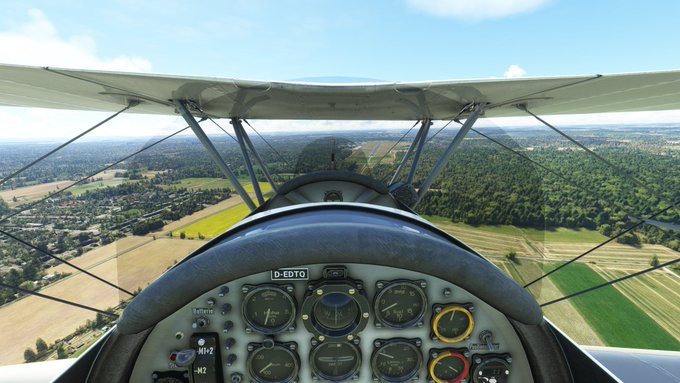
100 km/hr worked about to be about right and I came to a nice touchdown. This is way more runway than anyone needs in this plane.
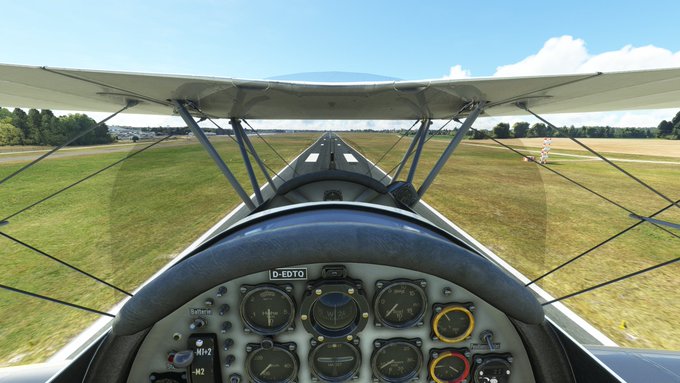
As I mentioned, the Jungmann is very highly regarded as an aerobatics plane, and about 200 survive to this day (many of them built outside of Germany). It is so popular that several dozen new ones were produced during the 1990s, to meet demand.
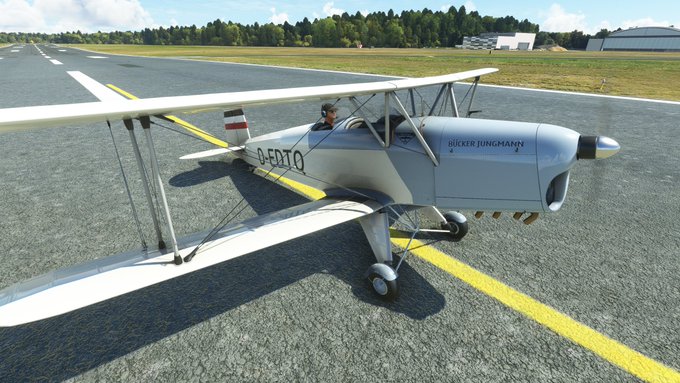
After the war, Carl Clemens Bücker worked for the Swedish company Saab, returning to his pre-war aviation roots. He died in 1976, at age 81.
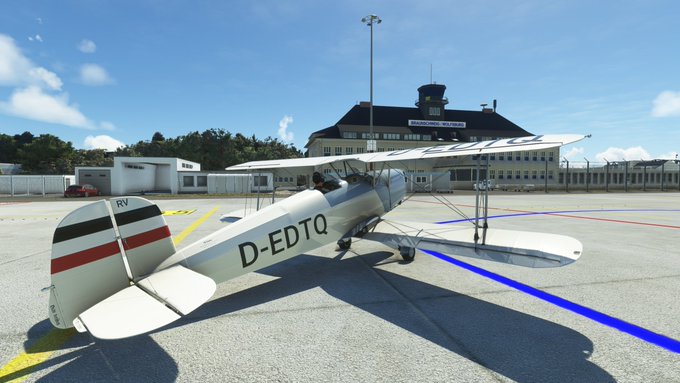
I hope you enjoyed this perhaps unexpected glimpse of the Bücker Bü 131 Jungmann, the airplane that trained the German Luftwaffe.
